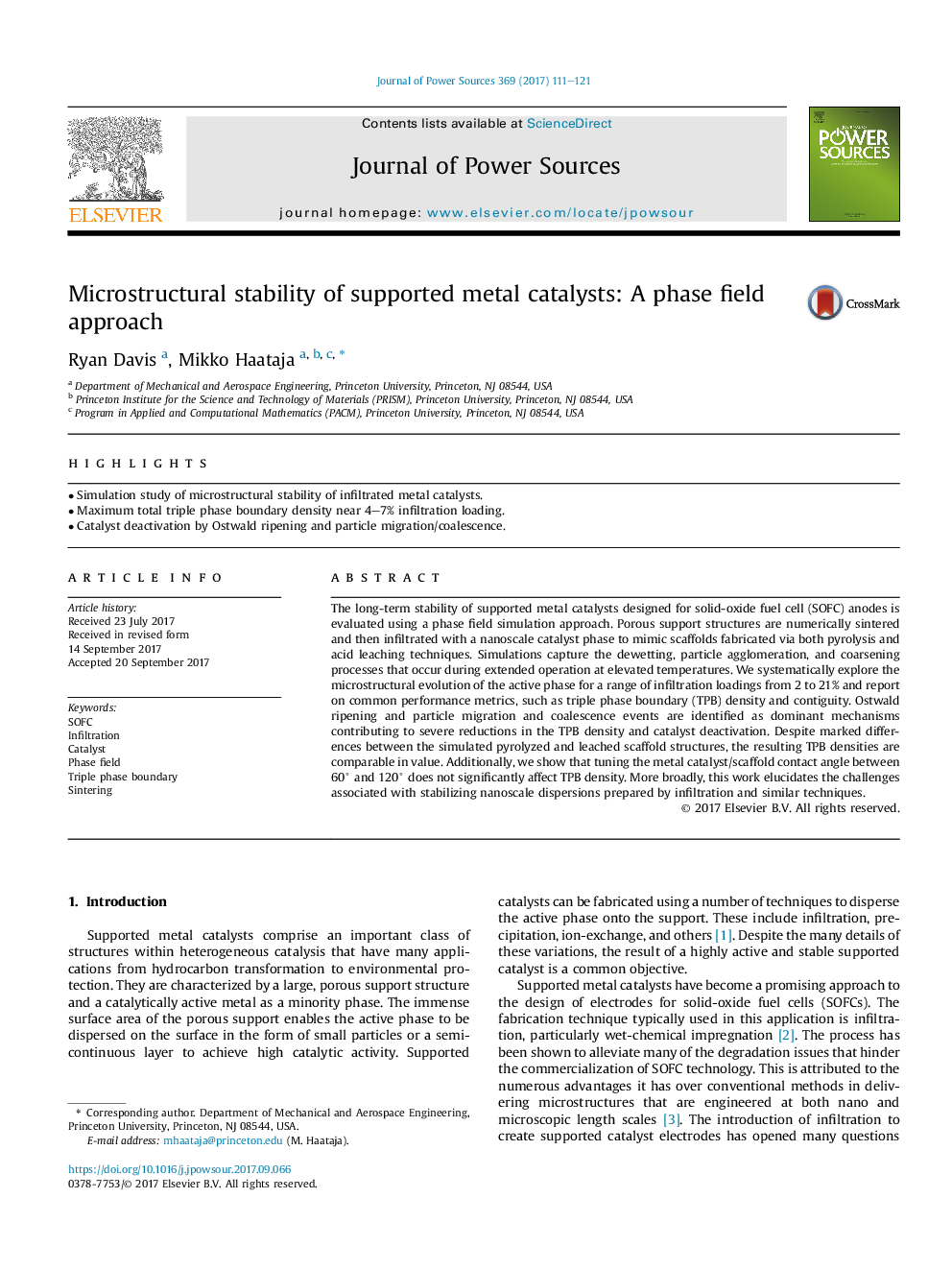| Article ID | Journal | Published Year | Pages | File Type |
|---|---|---|---|---|
| 5148667 | Journal of Power Sources | 2017 | 11 Pages |
Abstract
The long-term stability of supported metal catalysts designed for solid-oxide fuel cell (SOFC) anodes is evaluated using a phase field simulation approach. Porous support structures are numerically sintered and then infiltrated with a nanoscale catalyst phase to mimic scaffolds fabricated via both pyrolysis and acid leaching techniques. Simulations capture the dewetting, particle agglomeration, and coarsening processes that occur during extended operation at elevated temperatures. We systematically explore the microstructural evolution of the active phase for a range of infiltration loadings from 2 to 21% and report on common performance metrics, such as triple phase boundary (TPB) density and contiguity. Ostwald ripening and particle migration and coalescence events are identified as dominant mechanisms contributing to severe reductions in the TPB density and catalyst deactivation. Despite marked differences between the simulated pyrolyzed and leached scaffold structures, the resulting TPB densities are comparable in value. Additionally, we show that tuning the metal catalyst/scaffold contact angle between 60â and 120â does not significantly affect TPB density. More broadly, this work elucidates the challenges associated with stabilizing nanoscale dispersions prepared by infiltration and similar techniques.
Related Topics
Physical Sciences and Engineering
Chemistry
Electrochemistry
Authors
Ryan Davis, Mikko Haataja,
